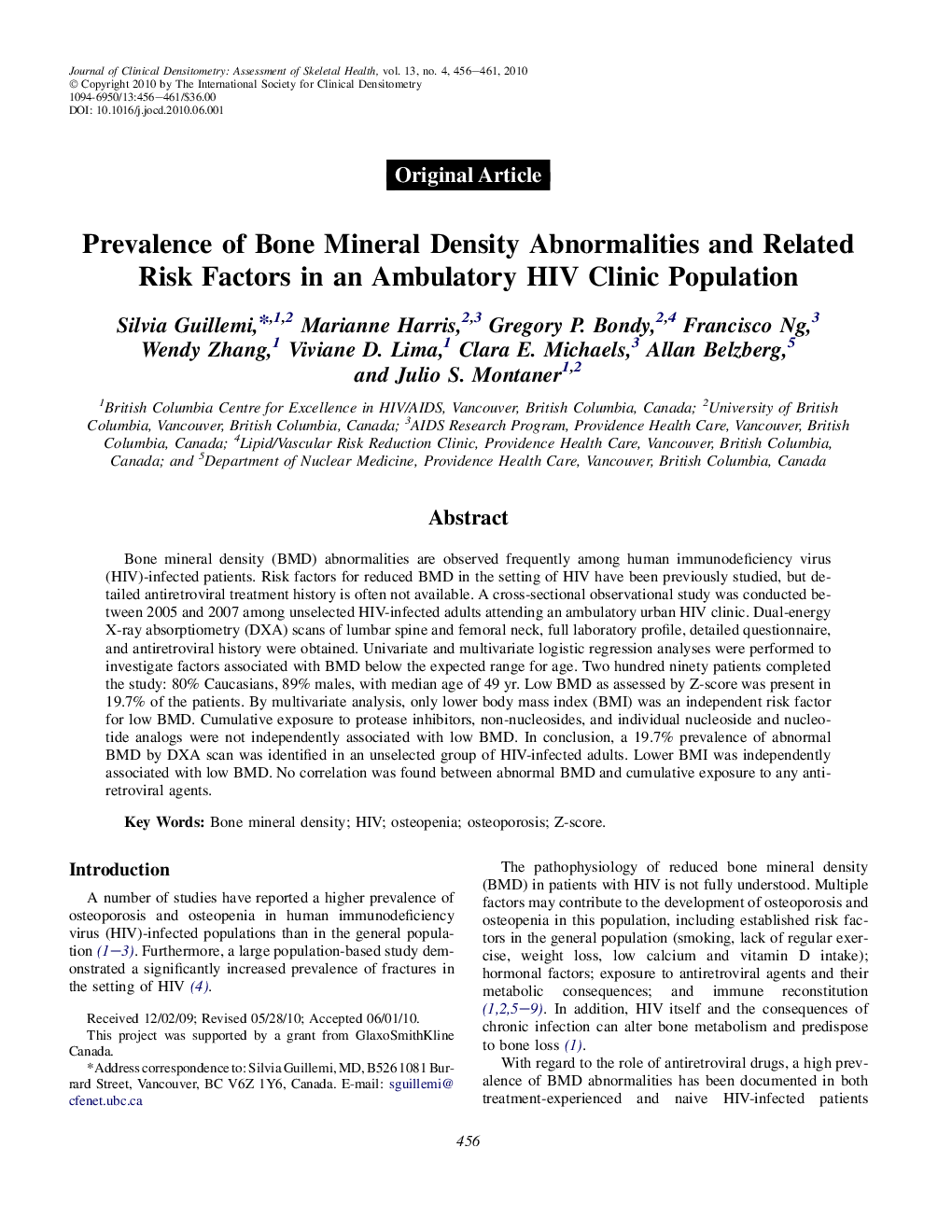| Article ID | Journal | Published Year | Pages | File Type |
|---|---|---|---|---|
| 3271090 | Journal of Clinical Densitometry | 2010 | 6 Pages |
Abstract
Bone mineral density (BMD) abnormalities are observed frequently among human immunodeficiency virus (HIV)-infected patients. Risk factors for reduced BMD in the setting of HIV have been previously studied, but detailed antiretroviral treatment history is often not available. A cross-sectional observational study was conducted between 2005 and 2007 among unselected HIV-infected adults attending an ambulatory urban HIV clinic. Dual-energy X-ray absorptiometry (DXA) scans of lumbar spine and femoral neck, full laboratory profile, detailed questionnaire, and antiretroviral history were obtained. Univariate and multivariate logistic regression analyses were performed to investigate factors associated with BMD below the expected range for age. Two hundred ninety patients completed the study: 80% Caucasians, 89% males, with median age of 49Â yr. Low BMD as assessed by Z-score was present in 19.7% of the patients. By multivariate analysis, only lower body mass index (BMI) was an independent risk factor for low BMD. Cumulative exposure to protease inhibitors, non-nucleosides, and individual nucleoside and nucleotide analogs were not independently associated with low BMD. In conclusion, a 19.7% prevalence of abnormal BMD by DXA scan was identified in an unselected group of HIV-infected adults. Lower BMI was independently associated with low BMD. No correlation was found between abnormal BMD and cumulative exposure to any antiretroviral agents.
Related Topics
Health Sciences
Medicine and Dentistry
Endocrinology, Diabetes and Metabolism
Authors
Silvia Guillemi, Marianne Harris, Gregory P. Bondy, Francisco Ng, Wendy Zhang, Viviane D. Lima, Clara E. Michaels, Allan Belzberg, Julio S. Montaner,
